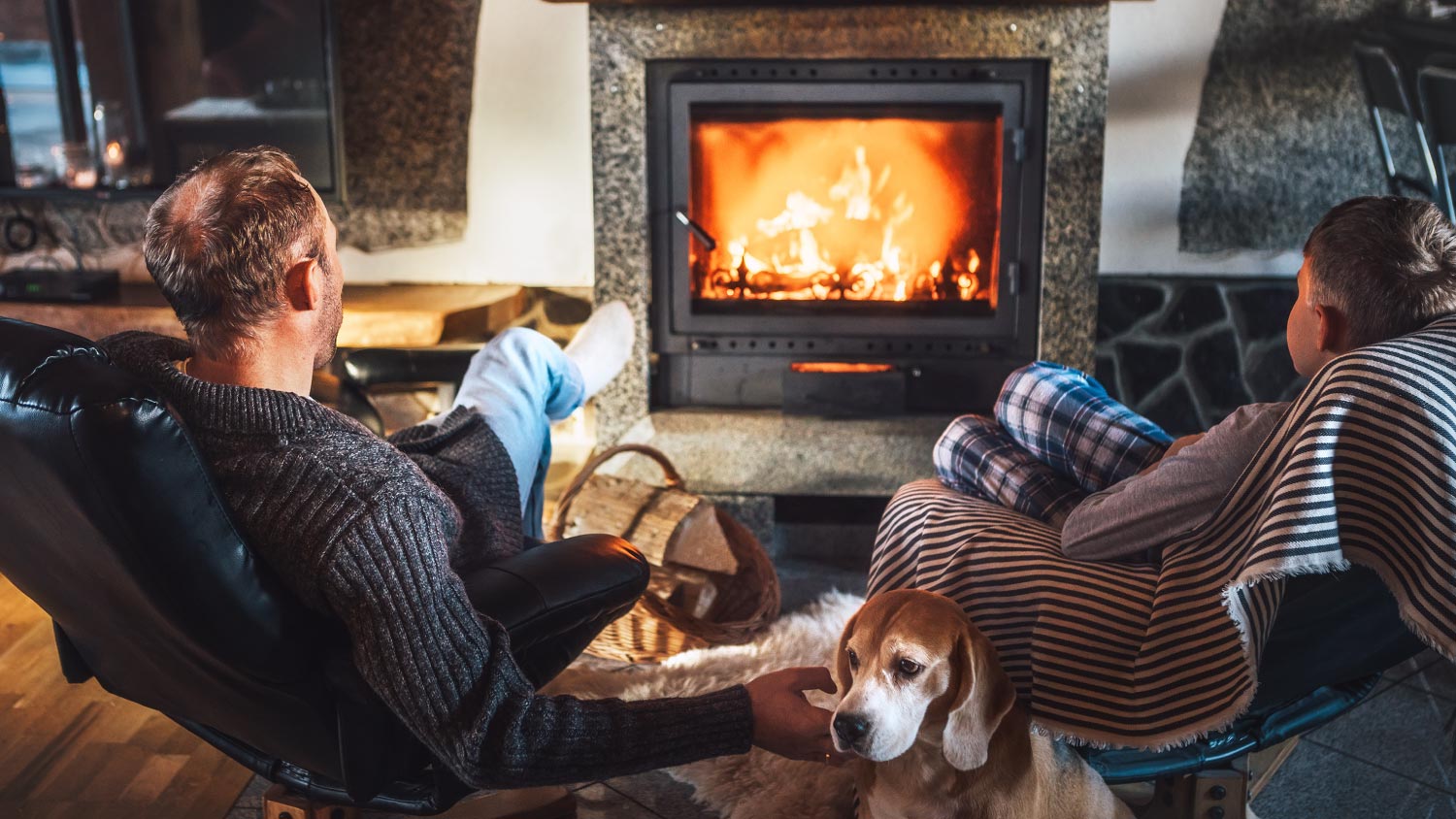What Is a Fireplace Insert—and Why Would You Want One?
It’s not just because they look nice


Fireplace inserts are premade appliances meant to fit into an existing fireplace hearth.
Types of fireplace inserts include gas, wood, pellet, coal, and electric.
Inserts are great because they can reduce pollutants that get released into the air while increasing the heating potential for your home.
Getting cozy by the fire is all about warming up—both your hands and your heart. But did you know that traditional fireplaces can actually drain more heat from your home than they generate? Enter the fireplace insert: a closed system that increases the fire’s efficiency, allowing you to enjoy both its ambiance and its heat. It’s a win-win situation—and we’ve got the scoop on everything you need to know about them.
What Is a Fireplace Insert?
A fireplace insert is an appliance that’s designed to fit into an existing masonry or wood fireplace hearth. The fire inside can run on a wide variety of fuels (more on that in just a second). Fireplace inserts are often made of steel or cast iron, and the firebox is encased behind a glass pane or glass doors. This creates an efficient heating system, reducing the amount of heat that is drawn into the fire itself (and therefore out of your living area). The exhaust still flows out through the chimney, so you do need a working fireplace to install a fireplace insert. Fireplace inserts allow you to enjoy all the benefits of a fireplace while avoiding some common drawbacks.
Why Get a Fireplace Insert?

If you already have a working fireplace, you might wonder why you’d want to upgrade to a fireplace insert. After all, your fireplace might not be perfectly efficient, but it works well enough, right?
Well, according to the U.S. Environmental Protection Agency (EPA), more than 90% of the heat a traditional fireplace generates is actually pulled directly up the chimney and vented out into the world, leaving you chilly despite the pleasant fireside atmosphere. Additionally, inserts certified by the EPA or Department of Environmental Quality (DEQ) can substantially reduce the pollutants that the fireplace releases into the air—not to mention into your home, where you and your family breathe them.
Along with increasing the amount of heat that stays in your home and being better for the health of both your family and the planet, fireplace inserts can also help you cut down on the mess that comes with a traditional fireplace. With a fireplace insert, all the ash and shoot stays safely behind the glass. A gentle stream of air keeps the ash from building up there, allowing you the best view into your crackling fire.
Types of Fireplace Inserts
Just like there are different types of fireplaces, there are also different types of fireplace inserts. Here are some of the pros and cons—and price estimates—for each.
Gas Fireplace Inserts
Fireplace inserts that run on gas are very popular, in part because they make starting a fire as simple as pushing a button. Gas is one of the most efficient fuels to burn, and it makes adjusting the heat very simple. However, you need a gas line to your home in order to make this one work, and if you don’t already have one, installing one can be expensive. Gas fireplace inserts often have efficiency ratings upward of 80%, and they cost between $1,400 and $3,000 or more. However, once they’re up and running, they don’t tend to add a lot to your gas bill because they’re very efficient at heating your home.
Working with gas can be very dangerous and even harmful to your health. Only attempt gas projects yourself if you have the experience and credentials to do so safely. Otherwise, let the professionals handle these jobs.
Wood and Pellet Fireplace Inserts

Wood isn’t as efficient a fuel as gas, and even for a wood-burning fireplace insert, efficiency ratings are closer to 50%. However, there’s just something about a wood-burning fireplace that’s hard to emulate in any other way, and the insert does make it significantly more efficient than a traditional, open wood-burning fire.
Obviously, if your fireplace insert runs on wood or wood pellets, you will need to replace the fuel as it burns. This can create an additional expense and hassle since wood is heavy to transport and has specific storage requirements. Wood fireplace inserts are also not the most budget-friendly, starting around $1,500 and ranging up to $5,000 or more.
Coal Fireplace Inserts
While they’re not as popular as other types of fireplace inserts, there are some inserts out there that run on coal. Coal can be a very efficient heat source, but again, having to store and replace coal can be a significant effort. The inserts themselves cost around $3,000.
Electric Fireplace Inserts
Electric fireplace inserts work a little differently than the other types. Rather than creating heat with actual combustion, they contain a small electric heater and create a simulated flame using LED lighting. However, electric fireplaces and fireplace inserts can be useful in homes that don’t have a chimney—or in fireplaces where the chimney has been blocked off. Additionally, it’s possible to find electric fireplace inserts for just a few hundred dollars. To learn more about the fireplace insert options that would work well in your hearth, call a fireplace pro near you. They can also tell you more about fireplace maintenance that will make your traditional wood-burning fire as efficient and warm as possible so that you can enjoy the glow.















